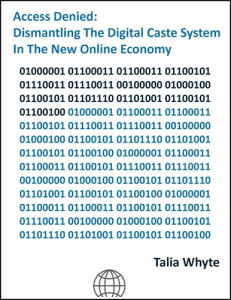“Access Denied” Ebook Available Now
 Global Wire Books is happy to release its latest publication, Access Denied: Dismantling The Digital Caste System In the New Online Economy.
Global Wire Books is happy to release its latest publication, Access Denied: Dismantling The Digital Caste System In the New Online Economy.
Technology has helped to make many social and economic advances in our society. However, ironically, many tech advances have also widened the digital divide between the world’s haves and have-nots. In 2012 Google Chairman Eric Schmidt said at the Mobile World Congress that while the poor will gain access to better technologies over the next decade, their advancements will pale in comparison to that of the rich. “We need to act now to avoid the digital caste system I’m talking about,” Schmidt said. “We can create a global network of equals.”
“The global economy is changing rapidly and the marketplace now demands entrepreneurs and workers who not only have competitive skill sets, but also have diverse perspectives and backgrounds,” said author Talia Whyte, who is also the managing director of Global Wire Associates. “Technology and innovation will play a huge role in the future economy, and society has to make sure traditionally marginalized groups, such as women, people with disabilities and racial and ethnic minorities are all on an equal playing field with the same access to resources and skill sets in the marketplace as well.”
In January 2013 Global Wire Associates launched the “Dismantle the Digital Caste System” campaign as a way to look more in-depth at the issues that continue to create a divide, and how technology can not only level the playing field for marginalized communities, but also support a vigorous economy. As the global recession continues, many are turning to new entrepreneurial opportunities in the technology and innovation sectors. Access Denied highlights a diverse selection of those entrepreneurs and other movers and shakers, as well as have discussions about other issues that contribute to the digital barrier that many of these entrepreneurs face such as poor broadband access, infrastructure, and racial, cultural and/or gender bias. This book contains all the articles from that campaign, as well as a new workforce diversity survey.
Price: US$3.99
Buy It Here:
Amazon Kindle
Barnes & Noble Nook
Google Play
EPUB (PayPal)
PDF (PayPal)
 A new year is always a good time to reassess your work and how to make it more effective. Over the last two months I have been redesigning my websites, and you may notice some slight changes.
A new year is always a good time to reassess your work and how to make it more effective. Over the last two months I have been redesigning my websites, and you may notice some slight changes.
